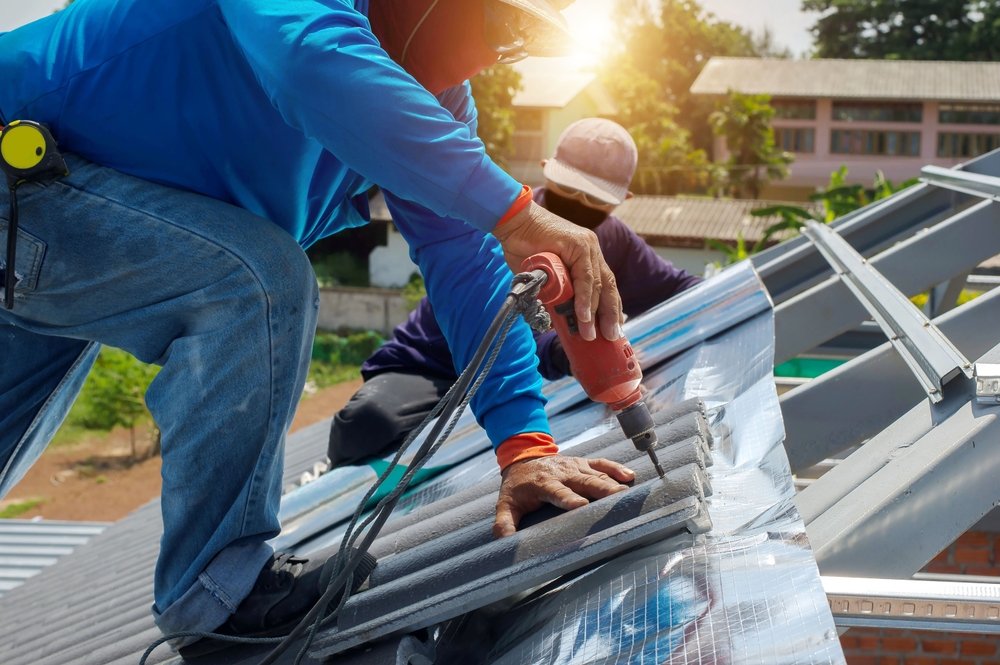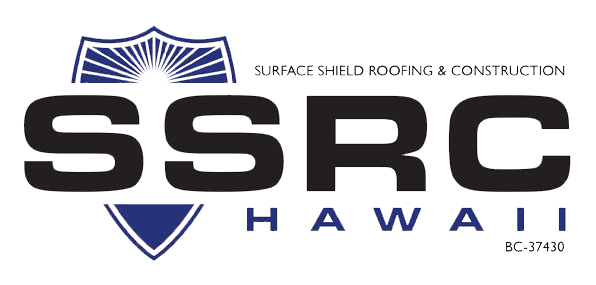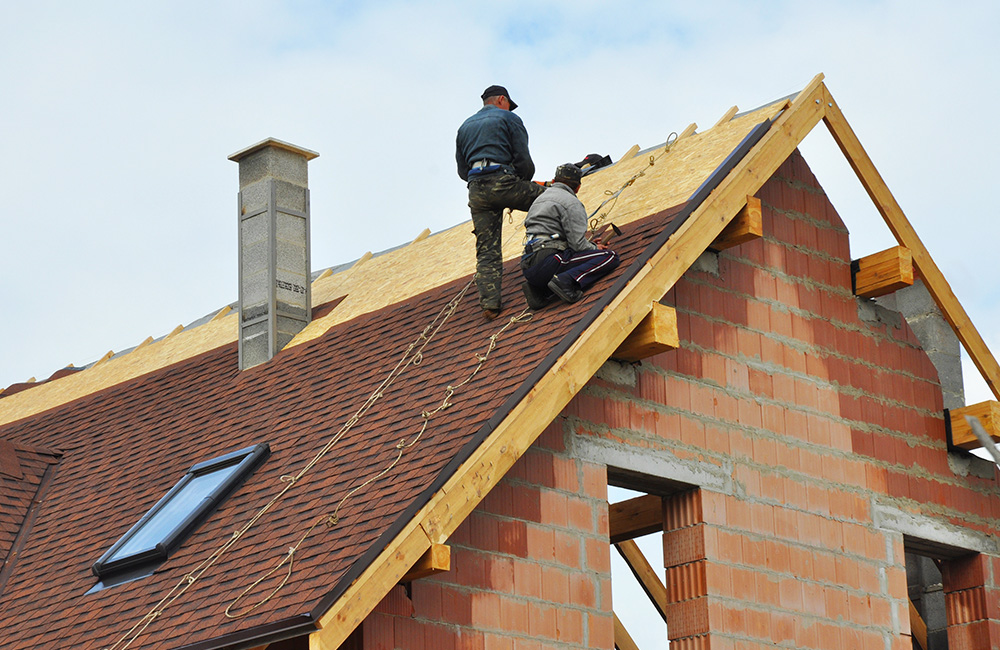Roofing Companies Oahu: Premier Roofers for All Roofing Projects
Roofing Companies Oahu: Premier Roofers for All Roofing Projects
Blog Article
Understanding the Various Sorts Of Roofs: A Comprehensive Guide for Homeowners
With a range of alternatives-- ranging from the typical gable to the modern level-- each type provides one-of-a-kind advantages and difficulties that must straighten with the house owner's ecological factors to consider and certain demands. As we explore the intricacies of numerous roofing types, it becomes apparent that one dimension does not fit all; the best option might surprise you.
Gable Roofs
Saddleback roofs, defined by their triangular form, are among one of the most preferred roof styles because of their simpleness and performance in shedding water and snow. This layout includes two sloping sides that fulfill at a ridge, permitting effective drain and decreasing the threat of water buildup. The high pitch typically linked with gable roofing systems enhances their capability to handle heavy precipitation, making them suitable for different climates.
Along with their practical benefits, gable roofs supply aesthetic versatility. They can be adapted to various architectural styles, from conventional to modern homes. The style can additionally accommodate extra functions such as dormer windows, which enhance natural light and ventilation in the attic room area.
Furthermore, saddleback roofs offer ample space for insulation, contributing to energy efficiency. House owners can pick from a range of roofing products, consisting of asphalt tiles, metal, and tiles, better enhancing modification alternatives.
In spite of their advantages, saddleback roofs might require added assistance in areas prone to high winds or hefty snowfall. Generally, the gable roofing system remains a favored option due to its blend of functionality, sturdiness, and visual charm.
Flat Roofs
Flat roofs are often identified for their minimalist layout and practical applications, particularly in commercial and industrial settings (oahu roofing). These roof coverings feature a almost horizontal or straight surface area, which allows for easy building and functional area usage. While they may lack the aesthetic allure of pitched roof coverings, flat roofings offer many advantages, especially in metropolitan settings where maximizing room is critical
One of the primary benefits of level roof coverings is their availability. House owners can utilize the roofing system area for numerous objectives, such as roof gardens, terraces, or photovoltaic panel installations. In addition, flat roofing systems are typically more cost-effective to preserve and mount compared to their sloped counterparts, as they require less materials and labor.
Nonetheless, level roof coverings do present certain difficulties. Appropriate water drainage is crucial to prevent water merging, which can result in leaks and structural damage. For this reason, choosing premium waterproofing products and normal inspections are critical for making sure durability. Typical products used for level roof coverings include built-up roof (BUR), modified bitumen, and single-ply membrane layers, each offering distinctive advantages. On the whole, level roofing systems serve as a useful and versatile choice for several homeowners and organizations alike.
Hip Roofings
Hip roofs are defined by their sloped sides that converge at the top, forming a ridge. This style stands out from gable roofs, as all 4 sides of a hip roofing system slope downwards toward the wall surfaces, offering an extra secure framework. The angle of the inclines can vary, permitting for adaptability in building appearances and functionality.
One of the main benefits of hip roofings is their capability to hold up against hefty winds and unfavorable climate problems. The sloped surface areas allow much better water drainage, minimizing the danger of leakages and water damage. In addition, her latest blog hip roof coverings offer increased attic room, which can be made use of for storage space or perhaps converted right into habitable areas.
Nevertheless, constructing a hip this contact form roof covering can be more pricey and complicated than simpler roofing types, such as saddleback roofs. The extra product and labor entailed in developing the inclines and making sure proper structural integrity can result in higher expenses. Regardless of these drawbacks, several home owners favor hip roof coverings for their durability, visual appeal, and potential for energy performance.
Mansard Roofing Systems
Mansard roofings, often acknowledged by their unique four-sided layout, function 2 slopes on each side, with the reduced slope being steeper than the upper. This building style, stemming from France in the 17th century, is not just aesthetically appealing however practical, as it makes best use of the useful space in the upper floors of a building. The steep reduced slope permits for even more headroom, making it an ideal selection for attic rooms or loft spaces, which can be converted right into living rooms.
Mansard roofings are identified by their versatility, suiting various architectural styles, from standard to contemporary. They can be constructed with various materials, consisting of asphalt tiles, slate, or steel, offering home owners with an array of choices to suit their preferences and spending plans. Furthermore, the design enables the assimilation of dormer windows, boosting natural light and ventilation in the upper levels.
However, it is important to consider the prospective drawbacks. Mansard roof coverings might call for more upkeep because of the intricacy of their style, and their high slopes check my reference can be challenging for snow and rain overflow. Overall, mansard roof coverings combine beauty with practicality, making them a prominent choice amongst homeowners looking for distinct architectural functions.
Lost Roofing Systems
As property owners progressively look for simplicity and functionality in their building designs, dropped roofing systems have emerged as a preferred choice. Defined by a single sloping aircraft, a shed roof covering presents a minimal aesthetic that matches various home designs, from modern to rustic.
One of the primary advantages of a shed roof is its simple building, which commonly converts to decrease labor and product prices. This style enables for effective water drainage, lowering the threat of leaks and water damages. Furthermore, the vertical incline supplies adequate space for skylights, boosting all-natural light within the inside.
Shed roof coverings additionally provide flexibility in terms of use. They can be successfully incorporated right into additions, garages, or outside frameworks like structures and sheds. Moreover, this roofing system style can suit numerous roof materials, consisting of metal, asphalt roof shingles, or perhaps green roofing systems, lining up with environment-friendly efforts.
However, it is crucial to consider regional environment problems, as heavy snow loads may require modifications to the roof's angle or framework. On the whole, dropped roofings provide a practical and aesthetically pleasing alternative for homeowners aiming to take full advantage of capability without jeopardizing design.
Verdict


Gable roofing systems, identified by their triangular form, are amongst the most preferred roofing designs due to their simpleness and performance in shedding water and snow. oahu roofing. The high pitch generally associated with gable roofs enhances their capability to handle heavy rainfall, making them suitable for different environments
While they may do not have the visual allure of pitched roofing systems, level roofing systems provide many benefits, specifically in city settings where maximizing room is important.

Report this page